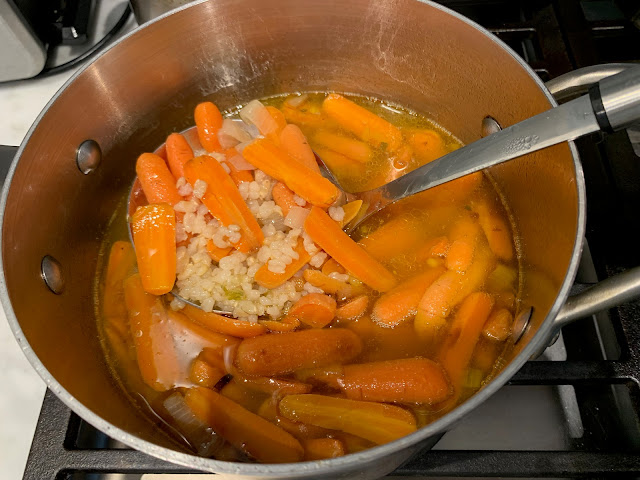I normally use a food processor to mix my pasta dough, but was feeling the urge to make it all by hand recently. I used a mix of 00 flour, all-purpose flour and semolina flour, but I don’t recommend using all three for this pasta, especially not the hard, durum semolina, which made it very difficult to roll. Semolina is a coarser, more yellow flour that’s also higher in gluten and protein. It’s great for tagliatelle, spaghetti or pappardelle, but not so much for stuffed pasta. Next time, I’m going with the softer, 00 flour that I normally use when making ravioli or anolini.
It’s fun to make the dough the old-fashioned way, creating a “volcano” and incorporating the flour and the eggs.
 Start out using a fork until the dough becomes too stiff. Then use your hands to knead it until it’s smooth. Let it rest at least a half hour while you prepare the filling.
Start out using a fork until the dough becomes too stiff. Then use your hands to knead it until it’s smooth. Let it rest at least a half hour while you prepare the filling.Since I wanted to make these the old-fashioned way, that meant I was determined to roll it out by hand too, instead of using my pasta machine. I soon had to enlist the help of my husband however, because the semolina in the dough made it really resistant to rolling by hand and my wrists and arms were complaining. (It’s also why pasta made with semolina holds up so well in cooking too, instead of turning mushy.) Let gravity help make the rolling easier and let part of the dough hang over an edge of your counter or pasta board, turning the dough a quarter of the way after each roll or two with the rolling pin.
When the dough is thin enough to see your hand through, spread the filling over half of it. Fold the dough over the filling.Then using a pastry or pasta crimper, cut strips about 3/4″ across.
Then cut the same width in the opposite direction.They really do remind me of puffy little Cheezits crackers.Simmer and serve in broth.
And sit down to a beautiful bowl of spoja lorda.Click here to connect with me on Instagram and find out what’s cooking in Ciao Chow Linda’s kitchen each day (and more)- FOR THE DOUGH:
- 3 cups 00 flour
- 4 eggs
- pinch of salt
- FOR THE FILLING:
- 6 oz. mortadella
- 1/2 cup mascarpone cheese
- 1/4 cup parmesan cheese, grated
- 1 egg
- pinch of salt
- a small grating of fresh nutmeg
- Make the dough either by hand or with a pasta machine.
- Roll out into a large circle by hand or with a pasta machine, until it’s thin enough to see your hands through it.
- Place the mortadella, mascarpone, parmesan cheese and egg in a food processor with the salt and nutmeg.
- Whir until smooth.
- Spread the mortadella mixture over half of the pasta dough and then fold the unfilled dough over the filled portion of the dough.
- Press dough gently to remove any air bubbles.
- Using a pasta cutter, cut into small squares about 1 inch across.
- Cook the pasta gently in a chicken broth and serve when done.
- Alternately, cook the pasta gently in water, then add to a pan with butter and sage.
- Sprinkle with more parmesan cheese.





















